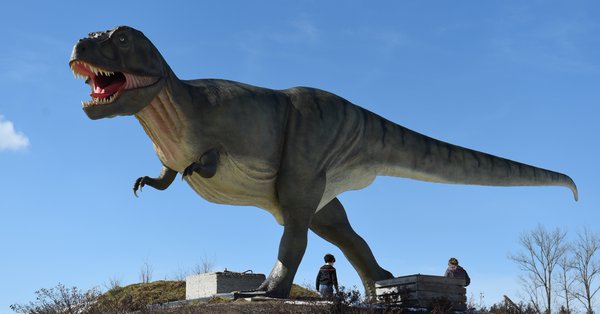T Rex dinosaur could not stick out their tongue says researchers
In addition to challenging depictions of dinosaur tongues, the research published in the journal PLOS ONE proposes a connection on the origin of flight and an increase in tongue diversity and mobility.

The ferocious T Rex most likely could not stick its tongue out like lizards, say scientists who have found that dinosaurs tongues rooted to the bottoms of their mouths in a manner akin to alligators.
Researchers from The University of Texas at Austin in the US and the Chinese Academy of Sciences made the discovery by comparing the hyoid bones - the bones that support and ground the tongue - of modern birds and crocodiles with those of their extinct dinosaur relatives.
In addition to challenging depictions of dinosaur tongues, the research published in the journal PLOS ONE proposes a connection on the origin of flight and an increase in tongue diversity and mobility.
"Tongues are often overlooked. But, they offer key insights into the lifestyles of extinct animals," said Zhiheng Li, an associate professor at the Chinese Academy of Sciences.
The researchers made their discovery by comparing the hyoid bones of extinct dinosaurs, pterosaurs and alligators to the hyoid bones and muscles of modern birds and alligator specimens.
Hyoid bones act as anchors for the tongue in most animals, but in birds these bones can extend to the tip.
Since extinct dinosaurs are related to crocodiles, pterosaurs and modern birds, comparing anatomy across these groups can help scientists understand the similarities and differences in tongue anatomy and how traits evolved through time and across different lineages.
The comparison process involved taking high-resolution images of hyoid muscles and bones from 15 modern specimens, including three alligators and 13 bird species as diverse as ostriches and ducks.
The fossil specimens, most from northeastern China, were scrutinized for preservation of the delicate tongue bones and included small bird-like dinosaurs, as well as pterosaurs and a Tyrannosaurus rex.
The results indicate that hyoid bones of most dinosaurs were like those of alligators and crocodiles - short, simple and connected to a tongue that was not very mobile.
The findings mean that dramatic reconstructions that show dinosaurs with tongues stretching out from between their jaws are wrong, researchers said.
"They've been reconstructed the wrong way for a long time. In most extinct dinosaurs their tongue bones are very short," said Julia Clarke, a professor at UT Austin.
In contrast to the short hyoid bones of crocodiles, the researchers found that pterosaurs, bird-like dinosaurs, and living birds have a great diversity in hyoid bone shapes.
They think the range of shapes could be related to flight ability, or in the case of flightless birds such as ostriches and emus, evolved from an ancestor that could fly.
The researchers propose that taking to the skies could have led to new ways of feeding that could be tied to diversity and mobility in tongues.
(This story has not been edited by Devdiscourse staff and is auto-generated from a syndicated feed.)
- READ MORE ON:
- Chinese Academy of Sciences
- tongue
- diversity
- bones
- dinosaurs
- hyoid
- birds
- hyoid bones
- extinct
- research
ALSO READ
After 10 years of work, landmark study reveals new ‘tree of life’ for all birds living today
'Birds of Goodness' executes 25th humanitarian aid airdrop in north Gaza
'Birds of Goodness' executes 24th humanitarian aid airdrop in north Gaza
'Birds of Goodness' executes 28th humanitarian aid airdrop and Eid clothing in north Gaza
'Birds of Goodness' airdrops 29th humanitarian aid batch in north Gaza










